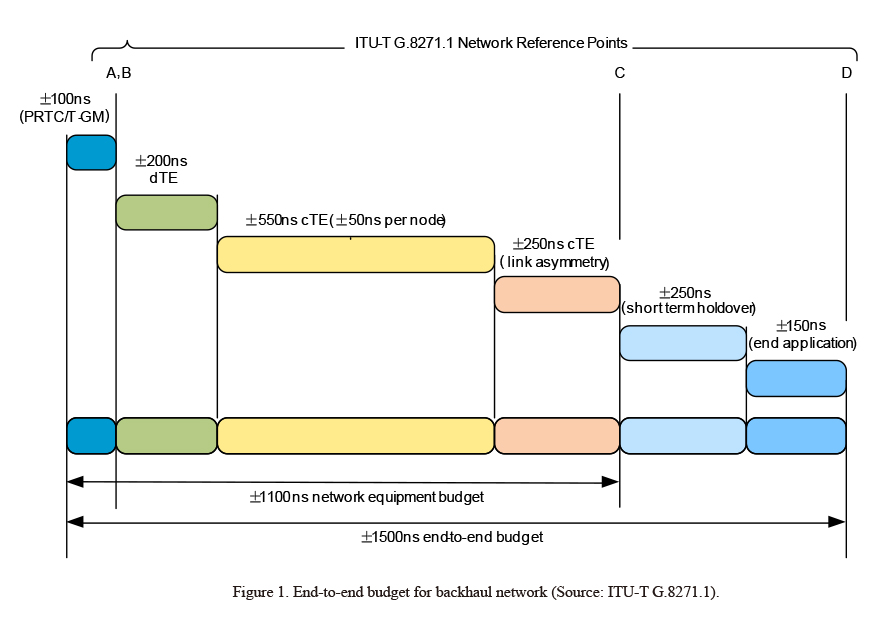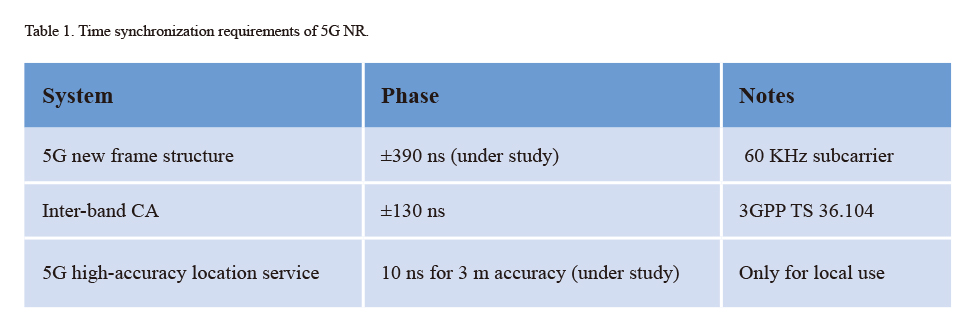Clock Synchronization Solution for 5G Microwave Backhaul
In a radio backhaul network, the frequencies and time of base stations need to be synchronized. Timing signals can be given to base stations through microwave. FDD base stations require frequency synchronization, while TDD base stations or FDD base stations that need to support advanced features require time synchronization. In the on-site deployments, each base station is usually equipped with a GPS system. The frequencies and time can be synchronized through a GPS lock.
In addition to GPS synchronization, an operator may also use 1588V2 and SyncE as an alternative solution. In case of GPS failure, base stations may synchronize frequencies through 1588V2 or SyncE, or synchronize time through 1588V2 plus SyncE.
Clock Synchronization for 3G/4G Microwave Backhaul
Frequency Synchronization
The frequency synchronization accuracy of base stations is less than 50 ppb. When base stations use 1588V2 as their frequency synchronization mode, the1588 solution need to comply with the ITU-T G.8265.1 profile, where 1588 servers are deployed in the central equipment room, 1588 packets are transmitted to base stations through the IP backhaul network, and base stations restore frequencies through locking 1588 packets. ZTE's BBU can effectively remove the 1588 packet jitter in several milliseconds and lock the frequencies that meet the requirement. A microwave device is used as the access part of an IP backhaul network. In most cases, the 1588 packets, similar to common service packets, are not processed but are only provided with QoS guarantee to ensure that the PDV introduced in 1588 packet transmission is relatively small. However, improper network bandwidth planning may cause packet congestion. This will increase the PDV of the 1588 packets and has an adverse impact on 1588 packet locking by the base stations. In this case, the microwave 1588 TC function can be enabled. ZTE's MW TC correction precision per hop is less than 50 ns. Suppose there are 10 hops in a microwave transmission link when the 1588 TC function is enabled, the introduced PDV is less than 0.5 µs, which has an extremely low impact on frequency restoration for base stations. Therefore, the PDV introduced in 1588 packet transmission can almost be ignored.
When base stations adopt SyncE as their frequency synchronization mode, the microwave clock transmission specifications must follow the ITU-T G.8262 standard to ensure that the clock information transmitted to the base stations can meet the ITU-T G.823 requirement and also satisfy frequency synchronization requirements for base stations.
Time Synchronization
Time synchronization is mandatory for TDD base stations and FDD LTE base stations that support advanced features. TDD base stations and LTE-A functions require that the time deviation between base stations should be less than 3 µs. When 1588V2 is used as the time synchronization mode, the time deviation between the base station and time source must be less than ±1.5 µs. In the case of BC cascading, the maximum error precision of ZTE's microwave device is less than 50 ns. Time synchronization errors are estimated in accordance with the ITU-T G.8271.1 standard (Fig. 1). ZTE's microwave device can also meet the precision requirement of time synchronization in a 10-hop link.

Clock Synchronization for 5G Microwave Backhaul
5G backhaul networks have higher requirements for frequency synchronization and time synchronization, and the relevant standards are under study. Frequency synchronization is defined in the ITU-T G.8262.1 standard (draft), in which frequency drift and transient change are specified in detail to provide a basic guarantee for improving the precision of time synchronization.
Table 1 lists the time synchronization requirements of 5G NR. 390 ns is a basic requirement of time synchronization for 5G NR, while 130 ns is a high-level requirement of time synchronization for 5G NR.

The original standards are no longer applicable to 5G time synchronization scenarios. Now 5G-oriented technical standards are being developed, and networking models and device specifications have not yet been determined. In the current draft standards, the requirements are much higher than the original ones. This raises higher requirements on developing future 5G microwave equipment. In addition to keeping pace with the standards development and improving equipment capabilities, ZTE has also proposed a new microwave solution to meet the challenge.
After locking a GPS system, ZTE's BBU is used as a time synchronization source because its time precision can satisfy the related technical requirements. ZTE's microwave device can interchange time information with the BBU and take the BBU as a standby time source through the clock source selection algorithm. When the GPS system of the BBU is operating normally, the BBU will be selected by a microwave device as its active time source. If the GPS system of the BBU fails, the microwave device may detect the failure by interacting with the BBU, and the time source can be switched to a neighbor microwave device through the clock source selection algorithm. If there are multiple BBUs whose GPS systems are available, the microwave device will select the nearest BBU as its time source so that the microwave time precision can be guaranteed. In practical deployment, a GPS system can be deployed on several BBUs in accordance with the time precision requirement. This satisfies the precision requirement of time synchronization while reducing the cost of GPS deployment.
Currently, the one-hop time synchronization precision of ZTE's microwave devices is less than 50 ns in the case of BC cascading. According to 5G standards, the reserved time synchronization precision should be corrected accordingly. Suppose the PRTC error is less than 20 ns, the phase error caused by holdover is less than 40 ns, the internal error of the base station is less than 20 ns, and the asymmetric error is 0 (back-to-back networking mode is often used in microwave transmission, and there is no fiber asymmetry problem). To meet the basic requirement of 5G time synchronization, the reserved time synchronization precision for a microwave link is 390 – 80 = 310 ns. If the maximum precision error of one-hop microwave is 50 ns, four-hop microwave can be supported. The high-level time synchronization requirement is 130 ns, which means one more hop can also be supported.
Today, microwave clock synchronization technology has been widely applied in 3G and 4G networks, and will have a more promising application prospect in 5G networks. As the industry continues to develop mature 5G standards and solutions, the clock synchronization solution for 5G backhaul networks will face higher requirements and challenges.